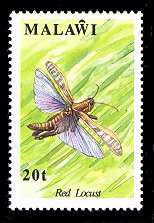Orthoptera
Pronunciation: [Or·THOP·ter·a]
Pronunciation: [Or·THOP·ter·a]
Common Name: Grasshoppers / Locusts / Crickets / Katydids
Greek Origins of Name: Orthoptera, derived from the Greek “ortho” meaning straight and “ptera” meaning wing, refers to the parallel-sided structure of the front wings (tegmina).
Hemimetabola, i.e. incomplete metamorphosis (egg, nymph, adult)
Polyneoptera, closely related to Blattodea and Dermaptera
Common and abundant throughout the world. Approximately 16 families and 1,200 species in North America and 28 families and >23,000 species worldwide
Orthoptera probably arose during the middle of the Carboniferous period. Most living members of this order are terrestrial herbivores with modified hind legs that are adapted for jumping. Slender, thickened front wings fold back over the abdomen to protect membranous, fan-shaped hind wings. Many species have the ability to make and detect sounds. Orthoptera is one of the largest and most important groups of plant-feeding insects.

Orthoptera is generally regarded as a dominant group in most terrestrial habitats. These insects feed on all types of plants and often cause serious economic damage. Swarms of grasshoppers (locusts) regularly appear in parts of Africa, Asia, and North America and destroy crops over wide land areas. Mole crickets are major pests in lawns and golf courses in the southern United States. Several species of field crickets are reared commercially as fish bait.
Grasshoppers and Locusts:
Katydids:
Crickets
 The red locust (Nomadacris septemfasciata) is an important pest of field crops in central Africa. This stamp was issued by the government of Malawi on September 21, 1991.
The red locust (Nomadacris septemfasciata) is an important pest of field crops in central Africa. This stamp was issued by the government of Malawi on September 21, 1991.